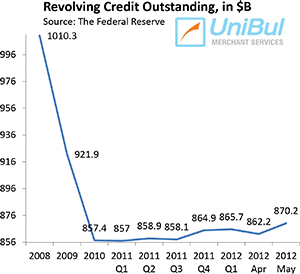What Every Merchant Needs to Know about Payment Gateways

Most of our clients accept credit card payments in a card-not-present environment and are just about evenly split between e-commerce and MO / TO (mail order and telephone order) businesses. One consequence is that we constantly get to speak to merchants about payment gateways and virtual terminals. In the process we have learned exactly what it is that merchants typically need help with or do not understand about these services.
So in this post I will offer another take on payment gateways, based on our current understanding of what it is that merchants need to know on the subject.
What Is Payment Gateway?
Payment gateway is an e-commerce application that provides transaction authorization and clearing services to web-based merchants. It integrates with the e-commerce website‘s shopping cart and activates once a visitor places an order. The gateway then encrypts the transaction information and transmits it between the website and the merchant’s acquiring bank.
The payment gateway is the e-commerce equivalent of the point-of-sale (POS) credit card terminal used in brick-and-mortar retail outlets. Both serve as a means of communication between merchants and acquiring banks.
Payment Gateway’s Role in the E-Commerce Transaction process
Let’s take a look at precisely where a payment gateway fits into the e-commerce transaction process. Here is what happens to the transaction information from the moment a visitor hits “Place Order” at the checkout of an e-commerce website to the receiving of confirmation (for Visa and MasterCard transactions):
- The visitor provides her card account information for payment.
- The information is SSL-encrypted and sent to the merchant’s web server.
- The payment gateway now collects the data, SSL-encrypts it and transmits it to the acquiring bank’s server.
- The acquirer then transmits the data to Visa or MasterCard (the Card Associations).
- The Associations transmits the data to the card issuer.
- The issuer either approves or declines authorization for the transaction and sends its response back to the acquirer.
- The acquirer then sends the issuer’s response to the payment gateway.
- The payment gateway transmits the response to the e-commerce website where it is displayed to the cardholder.
If the issuer’s response is an approval, the transaction is completed. If it is a decline, procedures vary, but the customer should be asked for an alternative form of payment. For Discover and American Express transactions the process is much simpler, as the issuer and the acquirer are one and the same. So in transactions involving cards of one of these companies, stages 4 through 6 from the above list would be combined into one.
What Payment Gateway Should You Use?
There are many payment gateways available on the market. When choosing one for your website, you will of course want it to be reliable, secure and fast. All major gateways will give you that. Some of them will offer fancy proprietary fraud prevention services, which are worth considering as well. But because I know that pricing is most of the time your primary consideration, let me offer you a few pointers.
When looking at payment gateway pricing, you must take it in the context of the overall merchant account pricing, as proposed to you. Some processors may offer you a very attractive discount rate, but somewhat less favorable gateway pricing or vice versa or something in between. Whatever the case, you will have to do the math for the pricing package as a whole.
Keep in mind that some processors may void gateway authorization fees, which are charged in addition to the discount. Authorization fees are typically at around 10 cents per transaction, so if you process thousands of transactions per month, we are talking about hundreds of dollars in additional fees. If that is the case, the monthly gateway fee, which is typically in the range $10 – $20, will be of much less importance for you. However, if your monthly transaction count was lower, say a few dozen, your priorities would be reversed and the monthly fee’s importance would rise at the expense of the authorization fee’s.
It is important that you invest the time and do your due diligence before your website and merchant account go life. Later on, if you discover that you have made a wrong choice, you may not be able to get out of your merchant account contract without paying a heavy penalty fee.
Image credit: Acteva.com.


